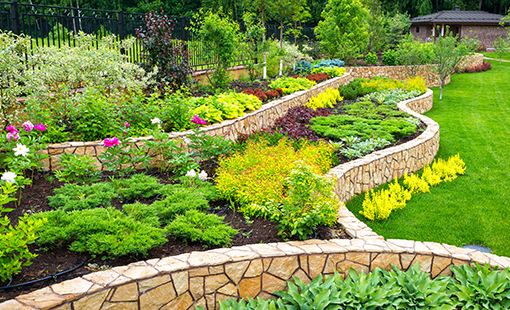
Gardening Q&A
Question: What can I plant in my garden to help save the pollinators?
Answer: Saving the pollinators by selecting the right plants for your garden will do more then just provide nectar for bees and butterflies, although without them we would be in serious trouble when it comes to putting food on the table. Planting for the pollinators also means that you are choosing native plants which will bring lots of color to the garden and are generally low maintenance plants, since they are species that have evolved to thrive in our native soils and seasonal changes. That means more enduring of wet springs, dry summers, and cold winters.
Native plants also provide seeds, nuts, berries, and cover for birds and other native animals, as well as nectar for bees, butterflies, and hummingbirds. When we plant natives or nectar plants we are helping to strengthen the local ecology, as well as strengthen the food chain all the way from the farm to the table!
Here are a few of our favorite pollinators:
Latin name Common name
Agastache s. hyssop
Asclepias t. milkweed
Echinacea p. coneflower
Liatris s. gay feathers
Lobelia c. cardinal flower
Monarda d. bee balm
Rudbeckia t. black eyed susan
You can also check out our guide to pollinators.
Question: What are some deer-resistant plants I can use in my garden?
Answer: Here is a thorough list of plants that deer do not like to eat, Deer Resistant Plants
Our Annual Catalog lists more annuals that deer don’t like, and our Perennial Catalog has our own deer resistant list as well.
Question: How can I properly prune and care for my fruit trees?
Answer: Hollybrook Orchards is a great resource for fruit tree care information. Visit their site for tips and more information on pruning your fruit trees: Hollybrook Orchards
Question: How often do I need to water my garden?
Answer: You have to get outside to know.
There is no straight answer to how much or how often one should water their garden. Gardeners like to grow plants from many different places around the world, so native environment of each plant should be considered. Lavender for example will need less water then Hosta, and succulents such as sedum even less then lavender. Try to group plants with similar cultural requirements together.
Over all, vegetables, Annuals and perennials with more shallow roots will need water more often but not as deeply as opposed to trees and shrubs that require much deeper watering but not as frequent. Then you have container gardens with different rules all together.
General guideline:
Annuals and perennials: every two to three days in the cooler months going to every other day mid to late spring, and probably every day by the heat of summer. Check Daily.
Container gardens: They will need water a little more frequently then your annuals and perennials in the ground, and by summer your hanging baskets in the sun may even need water twice a day if it’s hot, and windy. Drainage plays a huge role in container gardening. If your pots drain excess water upon watering as they should, they may need water daily. If they drain poorly, then you may need to water less frequently to avoid drowning the roots, or better yet improve drainage and check daily.
Trees and shrubs: A good deep watering twice a week and perhaps three times per week in the hotter days of summer. It is important to note that although your trees and shrubs are watered less frequently they must be saturated more widely and deeply .Most of the work is done by little hair like feeder roots at the end of the root structure.
After two years your trees and shrubs are considered established and can fend for themselves unless we are in a drought. If that is the case you will want to supplement with a good soaking once a week until drought has passed.
The above guidelines are just that. These guidelines should be considered with other factors such as wind, the time of year, and cloud cover. Wind desiccation plays as great a factor as heat or sun. The wind will wick the moisture from the surface of the ground and the leaves leaving your plants dry even if it is not that hot or sunny outside. If it is hot, sunny, and windy, you better grab a hose.
The days are longer in the summer so it means more hours of sun and heat than in the spring and fall, therefore your watering habits should be different in summer then in spring and fall. On the same note cloud cover is a factor also. If it is cloudy, you may get a break from the watering that day. In time, a good gardener will always be up to date on the weather forecast because they are planning their time to get ahead of watering instead of having to respond in crisis mode.

 Sue Adams
Sue Adams